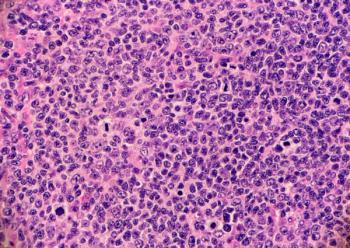
Tirzepatide Shows Substantial Decrease in Risk of Patients with Pre-Diabetes Developing Type 2 Diabetes
Patients administered tirzepatide (Zepbound and Mounjaro; Eli Lilly) also achieved sustained weight loss in Phase III trial, with individuals administered the 15 mg dose showing a 22.9% average reduction in body weight compared with 2.1% among those receiving placebo.
Weekly tirzepatide (Zepbound and Mounjaro; Eli Lilly) injections (5 mg, 10 mg, 15 mg) lowered the risk of adult patients with pre-diabetes and obesity or overweight from progressing to type 2 diabetes by 94% compared with placebo, according to data from the Phase III SURMOUNT-1 clinical trial (NCT04184622).1-3 Patients administered tirzepatide also experienced sustained weight loss during the treatment period, as those receiving the 15 mg dose achieved a 22.9% average reduction in body weight compared with 2.1% among those receiving placebo.
"Obesity is a chronic disease that puts nearly 900 million adults worldwide at an increased risk of other complications such as type 2 diabetes," Jeff Emmick, MD, PhD, senior vice president, product development, Lilly, said in a press release. "Tirzepatide reduced the risk of developing type 2 diabetes by 94% and resulted in sustained weight loss over the three-year treatment period. These data reinforce the potential clinical benefits of long-term therapy for people living with obesity and pre-diabetes."3
Tirzepatide was
GLP-1 and GIP are classified as incretins, which are expressed throughout the body, in areas such as pancreatic beta cells and the gastrointestinal tract. GLP-1 and GIP have been found to increase insulin from beta cells and glucose uptake by muscles while lowering blood glucose. GLP-1 stimulates glucose-dependent reduction of glucagon from alpha cells, lowering glucose production from the liver, and reducing blood glucose.4
Tirzepatide’s mechanisms of action include stimulation of first- and second-phase insulin secretion and decreased glucagon levels in a glucose-dependent manner. Tirzepatide has been found to inhibit gastric emptying, reduce fasting and postprandial glucose concentration, reduce food intake, and lower body weight in patients with type 2 diabetes, as well as increasing insulin sensitivity.4
For the double-blind, controlled SURMOUNT-1 trial, investigators randomly assigned 2539 adults with a body-mass index (BMI) of 30 or more or 27 or more and at least one weight-related complication other than diabetes, in a 1:1:1:1 ratio to receive once-weekly subcutaneous tirzepatide at doses of 5 mg, 10 mg, or 15 mg, or placebo for 72 weeks, which included a 20-week dose-escalation period. The trial’s coprimary end points were percentage change in weight from baseline and a 5% or more weight decrease.
At baseline, mean body weight was 104.8 kg, mean BMI was 38.0, and 94.5% of participants had a BMI of 30 or higher. By week 72, the mean percentage change in weight was −15.0% (95% confidence interval [CI], −15.9 to −14.2) in the tirzepatide 5-mg weekly dose cohort, −19.5% (95% CI, −20.4 to −18.5) in the 10-mg weekly dose cohort, and −20.9% (95% CI, −21.8 to −19.9) in the 15-mg weekly dose cohort, compared to −3.1% (95% CI, −4.3 to −1.9) in the placebo cohort (P<0.001 for all comparisons with placebo). Further, 85% (95% CI, 82 to 89) of patients in the 5 mg cohort, 89% (95% CI, 86 to 92) in the 10 mg cohort, and 91% (95% CI, 88 to 94) in the 15 mg cohort achieved a weight reduction of 5% or more compared to 35% (95% CI, 30 to 39) in the placebo cohort.1
Fifty percent (95% CI, 46 to 54) and 57% (95% CI, 53 to 61) of patients in the 10 mg and 15 mg cohorts achieved a body weight decrease of 20% or more, respectively, compared to 3% (95% CI, 1 to 5) in the placebo cohort. Tirzepatide also produced improvements across all prespecified cardiometabolic measures, according to the investigators.
In terms of safety, the most frequently reported adverse events (AEs) in the tirzepatide cohort were gastrointestinal in nature and primarily occurred during the dose escalation period, with most AEs being mild to moderate in severity. AEs led to treatment discontinuation in 4.3%, 7.1%, 6.2%, and 2.6% of participants in the 5 mg, 10 mg, and 15 mg tirzepatide cohorts, and placebo cohort, respectively.
“This is an unusually substantial degree of weight reduction in response to an antiobesity medication as compared with findings reported in other phase 3 clinical trials,” the study authors concluded. “Given that tirzepatide is both a GIP receptor and GLP-1 receptor agonist, we speculate that there may be additive benefit in targeting multiple endogenous nutrient-stimulated hormone pathways that have been implicated in energy homeostasis.”1
References
1. Jastreboff A, et al. Tirzepatide Once Weekly for the Treatment of Obesity. Published June 4, 2022. N Engl J Med 2022;387:205-216. DOI: 10.1056/NEJMoa2206038. Vol. 387 No. 3
2. A Study of Tirzepatide (LY3298176) in Participants With Obesity or Overweight (SURMOUNT-1). ClinicalTrials.gov. August 1, 2024. Accessed August 20, 2024.
3. Tirzepatide reduced the risk of developing type 2 diabetes by 94% in adults with pre-diabetes and obesity or overweight. News release. Lilly. August 20, 2024.
4. FDA Approves Lilly's Zepbound™ (tirzepatide) for Chronic Weight Management, a Powerful New Option for the Treatment of Obesity or Overweight with Weight-Related Medical Problems. Eli Lilly and Company. News release. November 8, 2023.
5. Rosenstock, J, et. al. Efficacy and safety of a novel dual GIP and GLP-1 receptor agonist tirzepatide in patients with type 2 diabetes (SURPASS-1): a double-blind, randomised, phase 3 trial. Lancet. 2021;398(10295):143-155. doi: 10.1016/S0140-6736(21)01324-6. Accessed August 20, 2024.
Newsletter
Stay current in clinical research with Applied Clinical Trials, providing expert insights, regulatory updates, and practical strategies for successful clinical trial design and execution.




